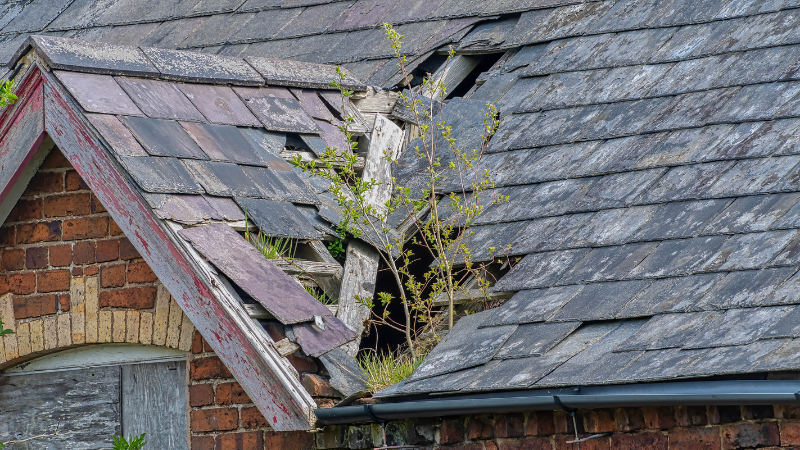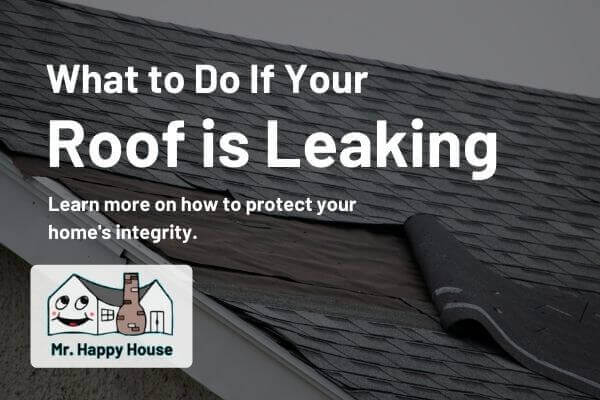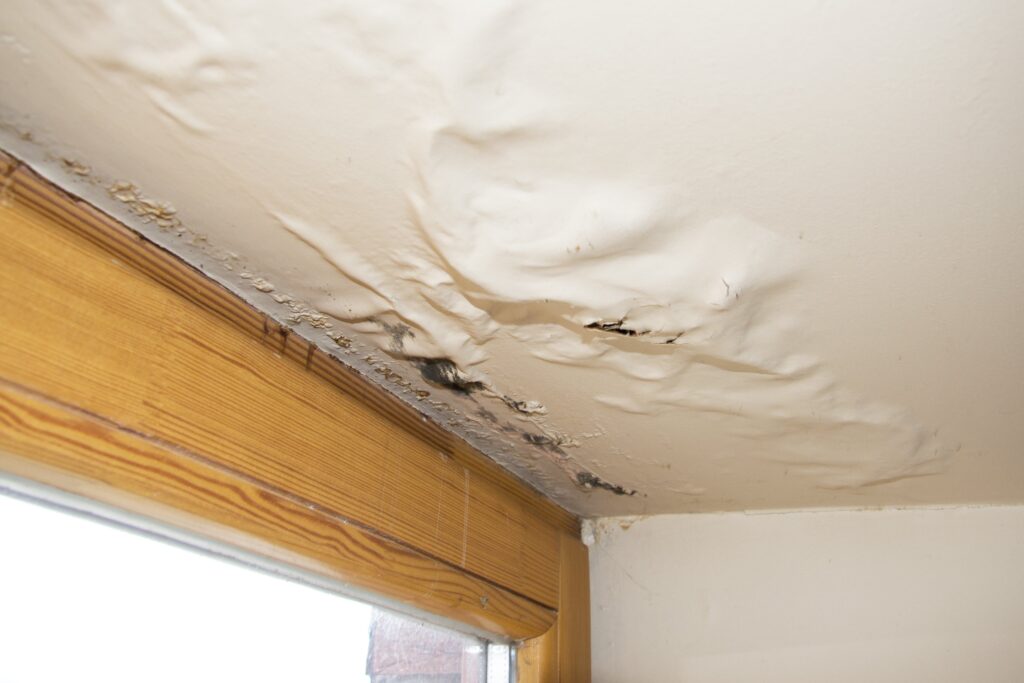Mold growth in homes due to a leaky roof is a serious concern that can go unnoticed until it becomes a full-blown problem. As a homeowner, it is crucial to understand the potential dangers and take necessary measures to protect your living space. In this article, we will explore the detrimental effects of mold caused by a leaky roof and provide you with practical tips on how you can safeguard your home from this health hazard. By the end of this read, you will be equipped with the knowledge needed to prevent mold growth and ensure the safety and well-being of your household.
Identifying a leaky roof
Checking for water stains on the ceiling
Identifying a leaky roof is the first step in protecting your home from mold growth. One way to do this is by checking for water stains on the ceiling. These stains often appear as discolored patches or circular rings, indicating water infiltration from the roof. It is important to pay attention to any discoloration on your ceiling, as it could be a sign of an underlying roof leak.
Examining the attic for signs of water damage
Another method to identify a leaky roof is by examining the attic for signs of water damage. During a rainstorm, water can seep through the roof and accumulate in the attic, causing damage over time. Look for damp or discolored areas on the walls or ceilings of the attic, as well as any signs of mold growth. Additionally, check for water stains or pooling water around roof vents or chimneys, as these areas are common entry points for water leaks.
Monitoring musty odors in the house
Musty odors in your house can be an indication of mold growth, which can be caused by a leaky roof. Mold thrives in moist environments, and a leaky roof provides the perfect conditions for mold to flourish. If you notice a musty smell in your home, especially in areas close to the roof or where water stains are present, it is important to take action as soon as possible. These odors should not be ignored, as they could be a sign of hidden mold growth that needs immediate attention.
Understanding the connection between a leaky roof and mold growth
Explaining how water from a leaky roof promotes mold growth
When a roof is leaking, water infiltrates the structure of the house, including the walls, ceilings, and insulation. This moisture creates an ideal environment for mold spores to grow and multiply. Mold spores are microscopic and can easily become airborne, spreading throughout the home and posing health risks to the occupants. The continuous presence of water from a leaky roof provides the necessary moisture for mold colonization, leading to extensive mold growth if left unaddressed.
Discussing the ideal conditions for mold to thrive
Mold requires certain conditions to thrive and reproduce. These conditions include moisture, a source of food (such as organic materials like drywall or wood), and a suitable temperature range. A leaky roof provides the necessary moisture for mold growth, especially if the leak is recurrent or prolonged. The dark and warm environment of a house also contributes to mold growth, as mold spores can find suitable surfaces to settle and proliferate. Understanding these favorable conditions is crucial in tackling mold issues caused by a leaky roof.

This image is property of www.servicemasternj.com.
Assessing the potential dangers of mold in the home
Highlighting health risks associated with mold exposure
Mold exposure can have detrimental effects on human health, particularly for individuals with allergies, asthma, or compromised immune systems. When mold spores are inhaled, they can trigger allergic reactions, respiratory symptoms, and even contribute to the development of chronic respiratory conditions. Prolonged exposure to mold can also lead to more severe health issues, such as fungal infections and toxic reactions. Taking prompt action to address mold growth caused by a leaky roof is essential to protect the health and well-being of the occupants.
Identifying structural damage caused by mold
In addition to health risks, mold growth resulting from a leaky roof can cause significant structural damage to your home. Mold colonies gradually consume and deteriorate organic materials, such as drywall, wood, and insulation. This can weaken the structural integrity of the affected areas, leading to potential structural issues and costly repairs. Timely identification and proper remediation of mold growth are crucial to prevent further damage to the structure of your home.
Preventing mold growth by repairing a leaky roof
Locating and fixing the source of the roof leak
To prevent mold growth, it is essential to repair any existing roof leaks promptly. Start by locating the source of the leak, which may require a thorough inspection of the roof, attic, and surrounding areas. Look for damaged or missing shingles, cracked flashing, or areas where water could potentially penetrate the roof. Once the source of the leak is identified, make the necessary repairs to ensure the roof is watertight.
Replacing damaged or missing shingles
If your roof has damaged or missing shingles, it is crucial to replace them as soon as possible. Damaged shingles can allow water to penetrate the roof, leading to leaks and subsequent mold growth. Carefully inspect the roof to identify any shingles that are cracked, broken, or have lifted edges. Replace these shingles promptly to prevent further water infiltration and minimize the risk of mold growth.
Inspecting and repairing roof flashing
Roof flashing refers to the metal or plastic strips installed around roof penetrations, such as chimneys, vents, and skylights, to prevent water infiltration. Over time, flashing can become damaged or detached, compromising its effectiveness. Regularly inspect the condition of the roof flashing and make repairs as needed. Ensuring that all roof penetrations are properly sealed and protected will help prevent water leaks and subsequent mold growth.
Sealing roof vents and chimneys
Roof vents and chimneys are common areas where water can penetrate the roof, leading to leaks and potential mold growth. It is crucial to inspect these areas regularly and ensure they are properly sealed and protected. Use appropriate roof sealants or caulk to seal any gaps or cracks around roof vents and chimneys. By addressing these vulnerable areas, you can minimize the risk of water infiltration and subsequent mold infestation.
Applying a waterproof coating to the roof surface
To further protect your roof from leaks and mold growth, consider applying a waterproof coating to the roof surface. Waterproof coatings provide an added layer of protection against water infiltration and can prolong the lifespan of your roof. Consult with a roofing professional to determine the most suitable waterproof coating for your roof material and climate. Regularly maintain and reapply the coating as recommended by the manufacturer to ensure optimal effectiveness.

This image is property of images.squarespace-cdn.com.
Detecting and addressing mold growth due to a leaky roof
Using moisture meters to detect hidden mold
Mold growth resulting from a leaky roof is not always visible to the naked eye. To detect hidden mold, you can utilize moisture meters, which measure the moisture content in various materials. Moisture meters can help identify areas of elevated moisture levels, indicating the presence of hidden mold. When conducting mold inspections, it is recommended to use moisture meters to ensure comprehensive detection and accurate assessment of mold growth.
Removing visible mold using appropriate techniques
If you notice visible mold growth in your home due to a leaky roof, it is important to address it promptly and effectively. Visible mold can often be removed using appropriate cleaning techniques, such as using a mixture of water and detergent or specialized mold-cleaning solutions. However, it is crucial to follow proper safety protocols and guidelines when handling mold. Wear protective gear, such as gloves and masks, to minimize exposure to mold spores, and make sure to thoroughly clean and disinfect the affected areas.
Hiring professional mold remediation experts for extensive mold infestations
In cases where mold growth is extensive or difficult to access, it is advisable to seek the assistance of professional mold remediation experts. These professionals have the necessary knowledge, experience, and equipment to safely and effectively remove mold from your home. They can also conduct thorough inspections to identify the underlying causes of mold growth, such as a leaky roof, and provide recommendations for proper repairs and preventive measures.
Precautions to take before and during mold cleanup
Wearing proper protective gear
Before and during mold cleanup, it is crucial to wear proper protective gear to minimize exposure to mold spores. This includes wearing gloves, masks (such as N-95 respirators), and goggles. These protective measures help prevent inhalation or contact with mold spores, which can be harmful to your health. Additionally, avoid wearing clothing or shoes that can easily carry mold spores and spread them to other areas of your home.
Containing the affected area to minimize cross-contamination
To prevent the spread of mold spores during cleanup, it is essential to contain the affected area. This can be done by creating a physical barrier using plastic sheeting or tarpaulins. Seal off doors, windows, and any other openings to prevent the migration of mold spores to other parts of your home. Additionally, consider using negative air pressure machines or air purifiers with HEPA filters to further limit the spread of mold spores.
Ensuring proper ventilation during cleanup
Proper ventilation is important during mold cleanup to reduce the concentration of mold spores in the air. Open windows and use fans to increase airflow in the affected area. However, it is crucial to ensure that the ventilation does not spread mold spores to other areas of the house. Therefore, avoid using fans or air conditioning systems that recirculate air throughout the entire home during the cleanup process.
Avoiding the use of bleach for mold removal
Contrary to popular belief, bleach is not recommended for mold removal. While bleach can eliminate surface mold, it does not effectively penetrate porous materials and may not kill mold spores. Moreover, bleach can emit harmful fumes and may exacerbate respiratory symptoms. Instead, opt for specialized mold-cleaning solutions or consult with a professional mold remediation company for safe and effective mold removal methods.

This image is property of www.damagecontrol-911.com.
Tips for eliminating moisture and preventing mold in the home
Promoting good ventilation throughout the house
Proper ventilation is essential in reducing excessive moisture levels and preventing mold growth. Ensure that your home is well-ventilated by regularly opening windows, using exhaust fans in areas prone to moisture (such as bathrooms and kitchens), and installing ventilation systems if necessary. Good airflow helps to remove excess humidity and moisture, creating an environment less conducive to mold growth.
Using dehumidifiers in damp areas
If certain areas of your home tend to be consistently damp or humid, consider using dehumidifiers to maintain optimal moisture levels. Dehumidifiers extract excess moisture from the air, preventing it from condensing on surfaces and potentially causing mold growth. Place dehumidifiers in basements, crawl spaces, or any areas with high humidity levels, and remember to regularly empty and clean the dehumidifier to maintain its effectiveness.
Regularly inspecting and cleaning gutters and downspouts
Clogged gutters and downspouts can contribute to water infiltration and roof leaks. Regularly inspect and clean your gutters and downspouts to ensure proper water drainage from the roof. Remove any debris, such as leaves or twigs, that may obstruct the flow of water. This simple maintenance task can help prevent water accumulation on the roof, reducing the risk of leaks and subsequent mold growth.
Maintaining proper insulation to prevent condensation
Insufficient or damaged insulation can lead to condensation issues, creating a fertile environment for mold growth. Proper insulation helps regulate temperature and prevent the formation of condensation on surfaces, such as walls and ceilings. Inspect your home’s insulation and address any areas of concern. Ensure that insulation is properly installed in attics, crawl spaces, and walls to minimize the risk of moisture buildup and mold growth.
Addressing plumbing leaks promptly
Plumbing leaks, such as dripping faucets or leaky pipes, can introduce excess moisture into your home, contributing to mold growth. Address and repair any plumbing leaks as soon as they are detected. Regularly inspect your plumbing system for signs of leaks or water damage, and promptly fix any issues. By addressing plumbing leaks promptly, you can prevent unnecessary moisture buildup and minimize the risk of mold growth.
Importance of professional roof inspections and maintenance
Explaining why regular roof inspections are crucial
Regular roof inspections are crucial in detecting and addressing potential issues before they escalate. A professional roof inspection can identify early signs of roof damage, such as deteriorating shingles, cracked flashing, or faulty seals. By conducting regular inspections, you can catch and repair roof leaks promptly, preventing mold growth and potential structural damage to your home. Roof inspections are especially important after extreme weather events, such as heavy storms or hurricanes, which can cause significant damage to roofs.
Highlighting the benefits of professional roof maintenance
Professional roof maintenance offers numerous benefits in preventing and mitigating mold growth. Roofing professionals have the expertise to identify and fix roof issues, ensuring that your roof remains watertight and resistant to leaks. Regular maintenance activities, such as cleaning gutters, checking roof vents and flashing, and performing minor repairs, can significantly extend the lifespan of your roof and reduce the risk of mold growth. Investing in professional roof maintenance is a proactive measure to protect your home from the damaging effects of a leaky roof.
Scheduling inspections after extreme weather events
After experiencing extreme weather events, such as heavy rainfall or strong winds, it is essential to schedule a roof inspection. Even if there are no visible signs of damage, the roof may have been compromised, leading to potential leaks and subsequent mold growth. Professional roof inspections can identify any hidden issues and allow for timely repairs. Addressing roof damage promptly after extreme weather events can help prevent further damage, safeguard your home, and minimize the risk of mold growth.

This image is property of mrhappyhouse.com.
Educating yourself about the insurance coverage for roof leaks and mold
Understanding insurance policies and exclusions
Understanding your insurance policy is essential in determining the coverage for roof leaks and mold issues. Review the terms and conditions of your policy to understand what is covered and any exclusions that may apply. Insurance coverage can vary, so it is important to clarify with your insurance provider to ensure you have adequate coverage for potential damage caused by roof leaks and subsequent mold growth.
Reviewing the coverage options for roof leaks and mold
When reviewing your insurance coverage, pay attention to the specific options available for roof leaks and mold damage. Some policies may offer coverage for roof repairs, while others may cover mold remediation expenses. Assess the extent of coverage for roof leaks and mold damage, including any deductibles or limits that might apply. Consider discussing your coverage options with your insurance agent to explore additional coverage options if necessary.
Filing insurance claims for mold damage
If your home has suffered mold damage as a result of a leaky roof, it may be necessary to file an insurance claim. Before filing a claim, gather all the necessary documentation, such as photographs of the damage, invoices for repairs, and any other supporting evidence. Notify your insurance provider as soon as possible to initiate the claims process. Be prepared to provide detailed information about the extent of the mold damage and the repairs required. Working with your insurance company can help ensure a smooth and timely resolution to your mold-related insurance claim.
Conclusion
Emphasizing the importance of promptly addressing a leaky roof is crucial in protecting your home from mold growth. Identifying a leaky roof through methods such as checking for water stains on the ceiling, examining the attic for signs of water damage, and monitoring musty odors in the house is the first step. Understanding the connection between a leaky roof and mold growth, as well as the potential dangers associated with mold exposure and structural damage, highlights the significance of timely action.
Preventing mold growth requires repairing the leaky roof by locating and fixing the source of the roof leak, replacing damaged or missing shingles, inspecting and repairing roof flashing, sealing roof vents and chimneys, and applying a waterproof coating to the roof surface. Detecting and addressing mold growth due to a leaky roof involves using moisture meters to detect hidden mold, removing visible mold using appropriate techniques, and seeking professional help for extensive mold infestations.
Taking precautions before and during mold cleanup, such as wearing proper protective gear, containing the affected area, ensuring proper ventilation, and avoiding the use of bleach, helps minimize potential risks. Additional tips for eliminating moisture and preventing mold in the home include promoting good ventilation, utilizing dehumidifiers, inspecting and cleaning gutters and downspouts, maintaining proper insulation, and addressing plumbing leaks promptly.
Recognizing the importance of professional roof inspections and maintenance, especially after extreme weather events, safeguards against roof leaks and subsequent mold growth. Educating yourself about insurance coverage for roof leaks and mold enables you to make informed decisions regarding your policy and file claims if necessary.
In conclusion, promptly addressing a leaky roof and taking preventive measures to prevent mold growth are crucial steps in protecting your home and ensuring the health and safety of its occupants. By understanding the signs of a leaky roof, assessing potential dangers, and implementing preventive measures, you can effectively safeguard your home from mold-related issues that can arise as a result of roof leaks.

This image is property of info.pacificsheetmetal.net.
